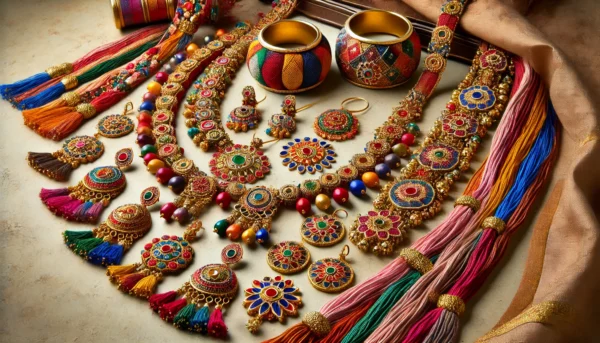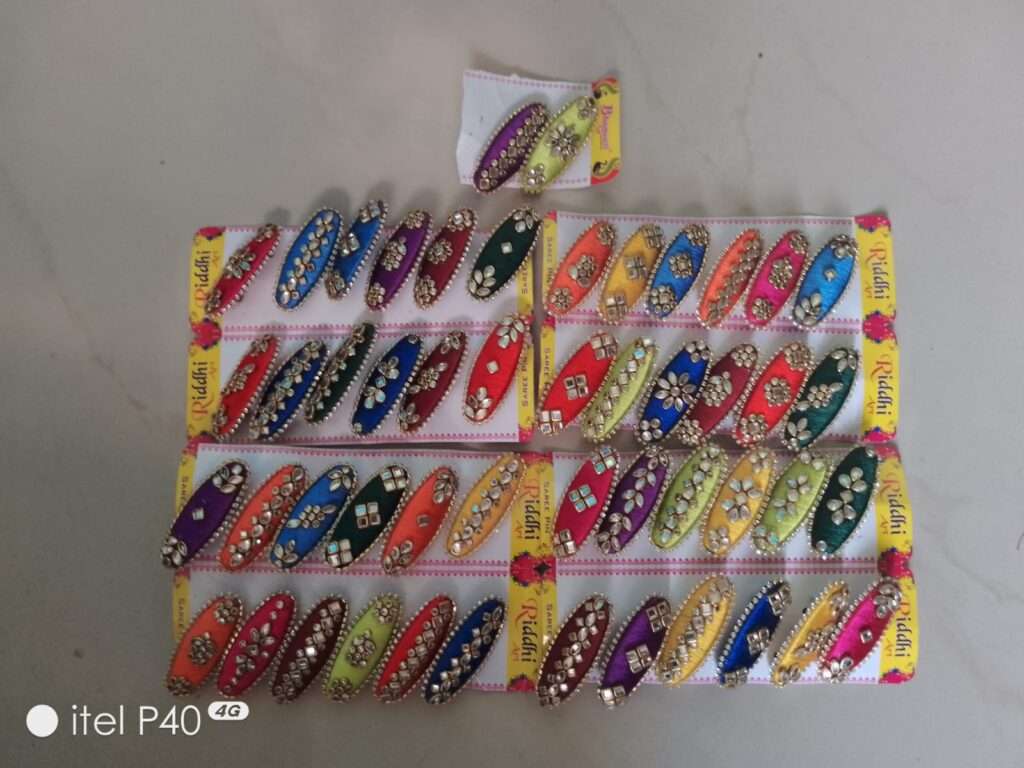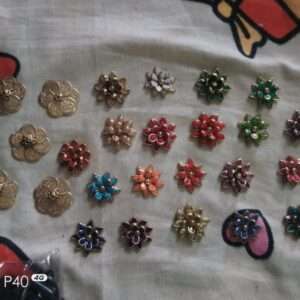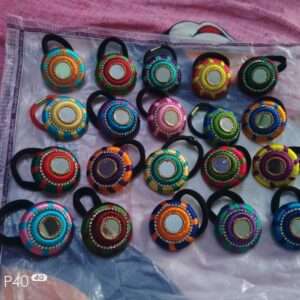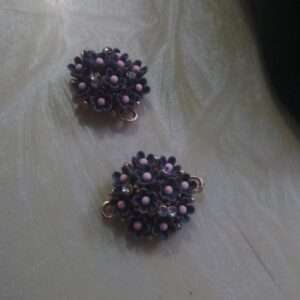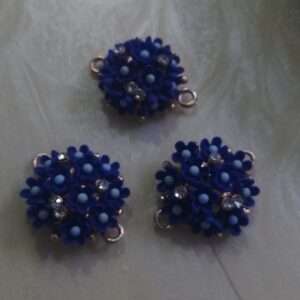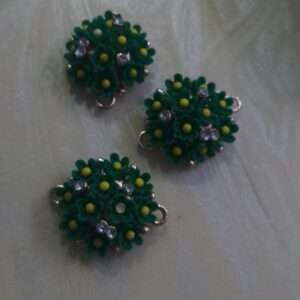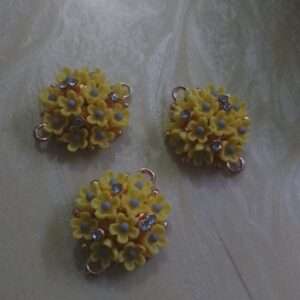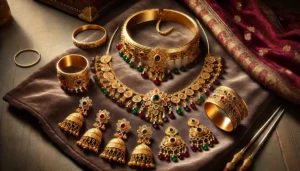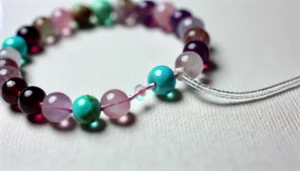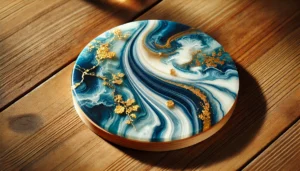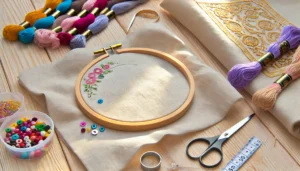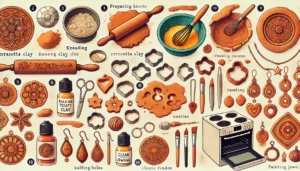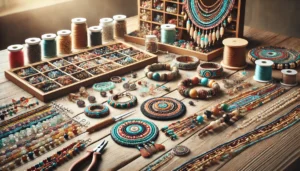Silk thread materials have long been a cornerstone in the jewellery-making traditions of India. Their unique qualities—elegance, flexibility, and cultural significance—make them indispensable in the creation of intricate and beautiful adornments. As the world shifts towards more sustainable and eco-friendly practices, the relevance of silk thread in jewellery has only grown. This article delves into the multifaceted aspects of silk thread jewellery, exploring its traditional uses, manufacturing processes, popular designs, and more.
Interested in custom silk thread jewellery? Hi, I’m Pallavi. I specialize in creating unique, handcrafted silk thread jewellery tailored to your preferences. Whether you’re looking for traditional designs or something modern, I can craft it just for you. Contact me on WhatsApp to place your order today!
Traditional uses of silk thread in jewellery making
Silk thread has been a pivotal element in Indian jewellery for centuries. Its use extends beyond mere aesthetics; it carries with it deep cultural and spiritual meanings. In religious ceremonies, silk thread jewellery is often worn as a symbol of purity and prosperity. Festivals such as Diwali, Navratri, and weddings are incomplete without the adornment of women in silk thread bangles, necklaces, and earrings. The thread’s softness and ability to hold vibrant dyes make it perfect for creating pieces that stand out, whether it’s a simple bangle or an elaborate necklace.
The cultural importance of silk thread in jewellery also reflects in its association with specific rituals and customs. For instance, in South India, brides often wear silk thread jewellery as part of their wedding attire, symbolizing purity and the weaving of new bonds. The intricate patterns and bright colours that silk thread jewellery offers are not just about decoration; they are a statement of tradition, heritage, and continuity.
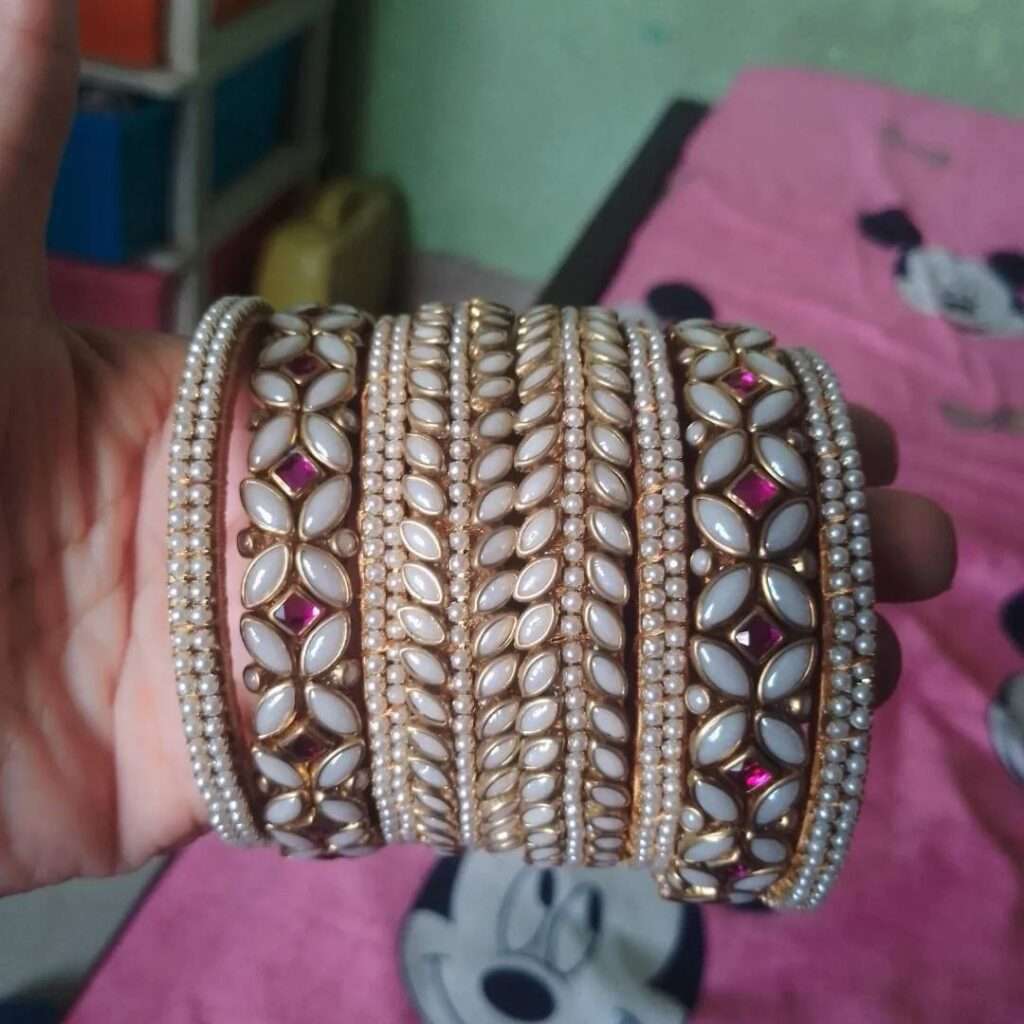
How silk thread is manufactured for use in jewellery
The journey of silk thread from raw material to a finished product suitable for jewellery is a meticulous process. It all starts with the cultivation of mulberry plants, the primary food source for silkworms. The silkworms, in turn, produce silk, which is harvested by carefully unwinding the silk cocoons.
Once the silk is collected, it undergoes a series of processes to transform it into thread. Dyeing is one of the first steps, where the raw silk is immersed in vibrant colours. The choice of dyes and the technique used can greatly influence the final appearance of the jewellery. Spinning follows, where the dyed silk is spun into fine threads, ensuring that they are strong yet flexible. The final step, weaving, involves combining these threads into various forms, depending on the intended use—whether for earrings, bangles, or necklaces.
The quality of the silk thread is paramount, as it determines the durability and appearance of the jewellery. Artisans pay close attention to every detail, ensuring that the thread is not only strong enough to withstand the rigors of wear but also delicate enough to create intricate designs.
Popular designs of silk thread jewellery in India
India’s diverse cultural landscape is reflected in its jewellery designs, and silk thread is no exception. Some of the most popular silk thread jewellery designs include Kundan, Meenakari, and Jhumkas.
- Kundan Jewellery: This design involves setting precious stones in a gold foil base, and silk thread is often used to add a colourful and textured backdrop. The result is a piece of jewellery that is both luxurious and vibrant.
- Meenakari Work: Known for its enamel designs, Meenakari jewellery often incorporates silk thread to enhance the vividness of the colours and add depth to the overall design.
- Jhumkas: These traditional Indian earrings are often made using silk thread, which allows for a wide range of colours and patterns. The thread is wound tightly around the earring base, creating a rich texture that is both lightweight and eye-catching.
These designs are not just popular in India but have also gained international recognition, with silk thread jewellery being exported to various countries. The versatility of silk thread allows designers to experiment with different styles, making it a popular choice for both traditional and contemporary jewellery.
Comparing the durability of silk thread to other jewellery materials
When it comes to durability, silk thread is often compared to other materials like metals and synthetic threads. While it may not be as robust as metals, silk thread offers a unique combination of softness and flexibility that other materials cannot match.
- Durability: Silk thread is less durable than metals like gold or silver. However, its natural elasticity and ability to absorb dyes make it a preferred choice for designs that require intricate weaving and vibrant colours.
- Comparison with Synthetic Threads: Unlike synthetic threads, silk is a natural fibre, which makes it biodegradable and eco-friendly. However, synthetic threads might offer more strength and durability but lack the natural sheen and feel of silk.
- Longevity: With proper care, silk thread jewellery can last for years. It’s important to follow best practices in maintenance to ensure the longevity of the jewellery.
Silk thread’s durability may be seen as a limitation, but for those who value elegance and craftsmanship, it is a small trade-off. The unique qualities of silk thread, such as its softness and ability to hold vibrant colours, make it a valuable material in the world of jewellery.
Best practices for maintaining and storing silk thread jewellery
Maintaining silk thread jewellery requires special care due to its delicate nature. Proper cleaning and storage are essential to preserving the quality and appearance of the pieces.
- Cleaning: Silk thread jewellery should be cleaned gently using mild soap and lukewarm water. Harsh chemicals or abrasive materials should be avoided as they can weaken the thread and cause the colours to fade.
- Storage: Proper storage is crucial for maintaining the condition of silk thread jewellery. It should be kept in airtight containers to prevent exposure to moisture, which can lead to mould or mildew. Additionally, storing silk thread jewellery away from direct sunlight will help preserve the vibrancy of the colours.
- Handling: When wearing or handling silk thread jewellery, it’s important to avoid excessive pulling or tugging, as the thread can be delicate. It’s also advisable to remove the jewellery before engaging in activities that might expose it to water or chemicals.
By following these best practices, the beauty and durability of silk thread jewellery can be maintained for years, allowing it to be passed down as a treasured heirloom.
Evolution of demand for silk thread jewellery over the past decade
The demand for silk thread jewellery has evolved significantly over the past decade. A key driver of this growth has been the increasing consumer preference for eco-friendly and sustainable fashion. As awareness about environmental issues has risen, more people are turning towards natural materials like silk thread as opposed to synthetic alternatives.
- Market Trends: The market for silk thread jewellery has expanded both domestically and internationally. In India, traditional silk thread jewellery has seen a resurgence, particularly during festivals and weddings. Internationally, there has been a growing interest in handmade and artisanal products, with silk thread jewellery being a popular choice.
- Social Media Influence: The rise of social media platforms has also played a role in popularizing silk thread jewellery. Influencers and fashion bloggers often showcase these pieces, highlighting their beauty and cultural significance, which in turn drives demand.
- Export Markets: Silk thread jewellery has become a popular export product, with countries like the United States, the United Kingdom, and Australia showing significant demand. The global appeal of silk thread jewellery lies in its uniqueness and the fact that each piece often carries a story of tradition and craftsmanship.
The growing demand for silk thread jewellery reflects a broader shift towards more conscious consumerism, where the focus is not just on aesthetics but also on the sustainability and ethics of fashion choices.
Environmental impacts of producing silk thread for jewellery
While silk thread is a natural and biodegradable material, its production does have environmental implications. The cultivation of mulberry plants and the rearing of silkworms require significant resources, including water, land, and energy.
- Resource Consumption: Mulberry cultivation, which is necessary for silkworm rearing, demands large amounts of water and land. This can lead to issues such as water scarcity and deforestation in regions where mulberry farming is intensive.
- Pollution: The dyeing process, which is essential for giving silk thread its vibrant colours, can contribute to water pollution if not managed properly. The use of natural dyes is one way to mitigate this impact, but it is not yet widespread.
- Sustainability: Despite these challenges, silk is a renewable resource, and with sustainable farming practices, the environmental impact of silk production can be minimized. Biodegradability
